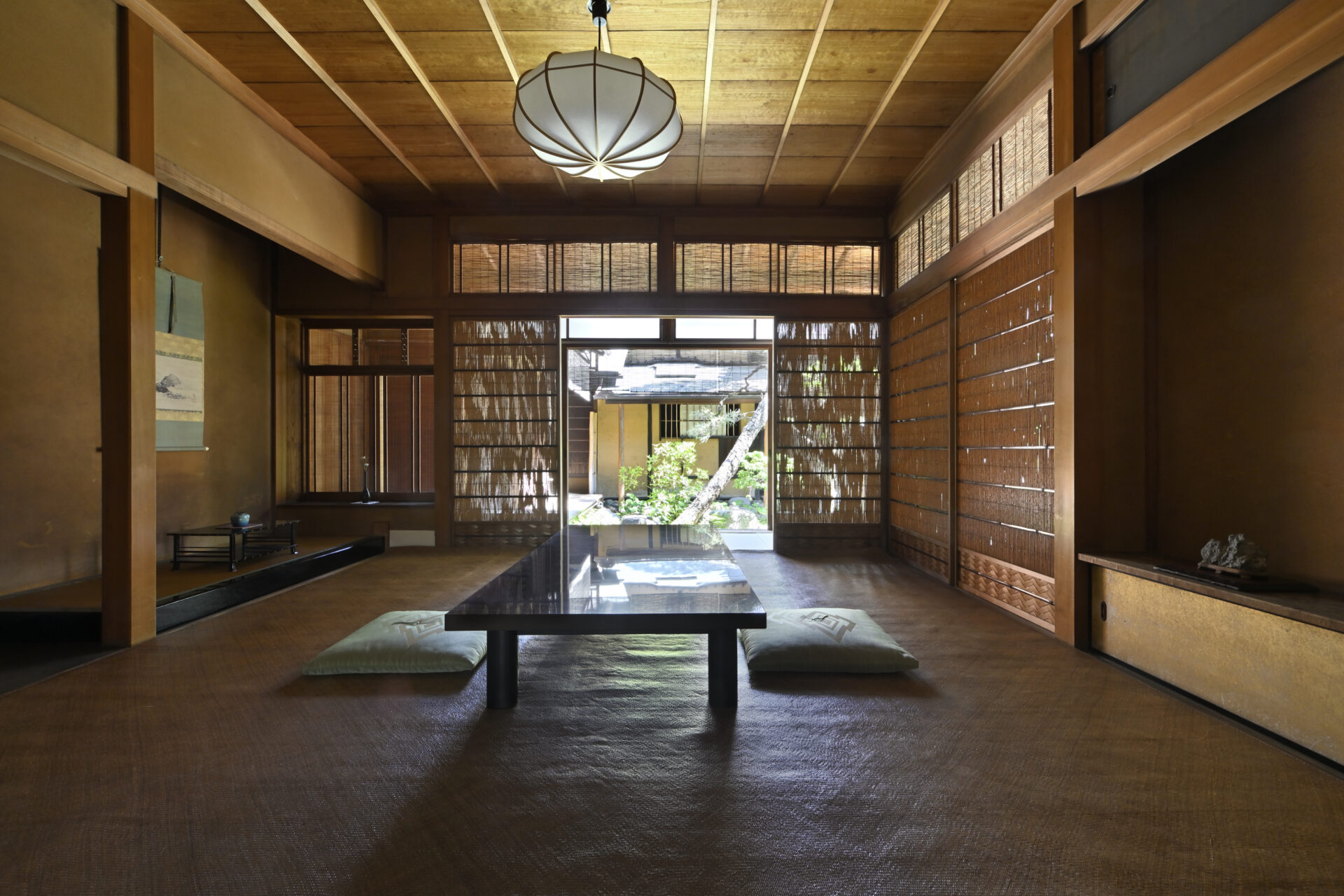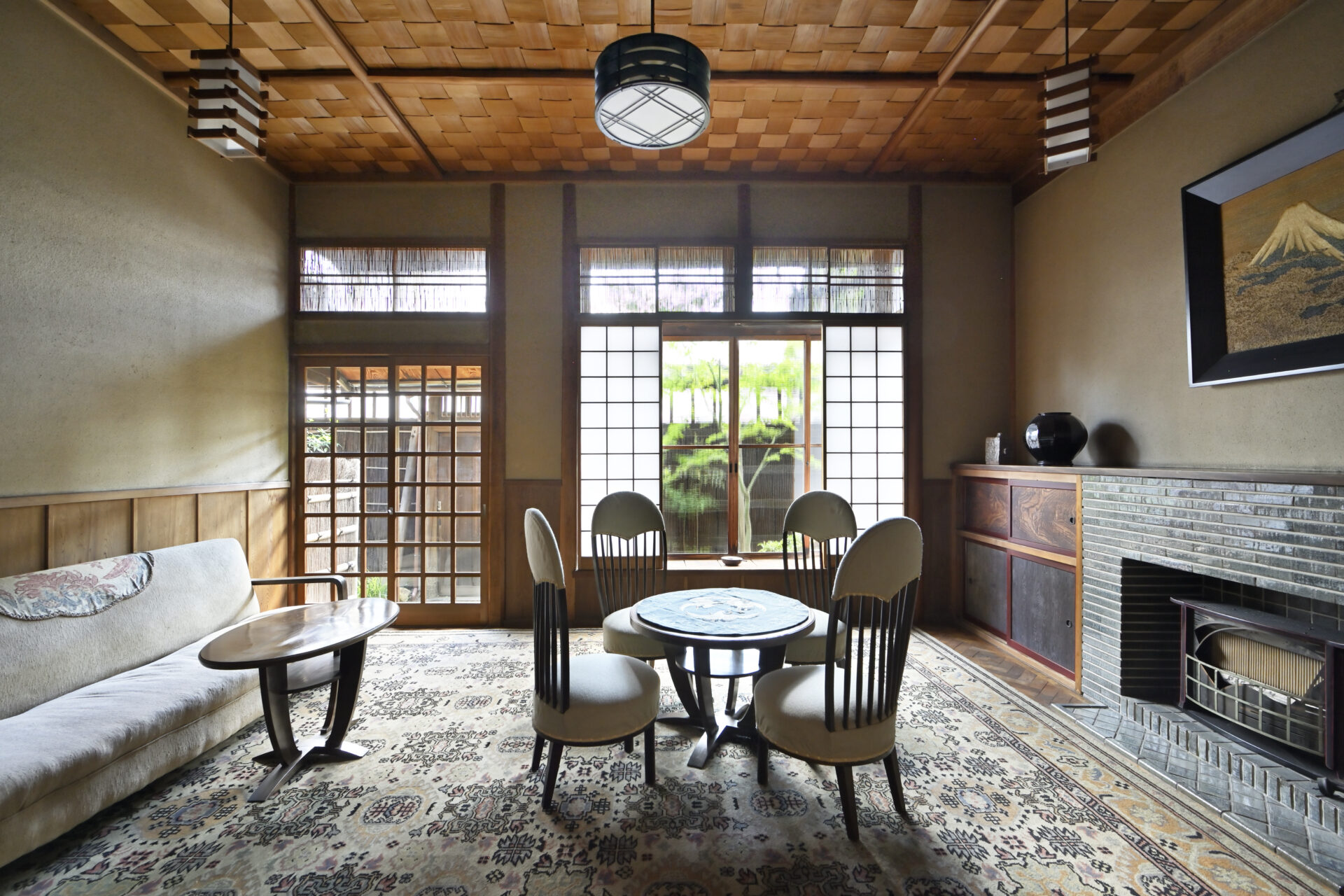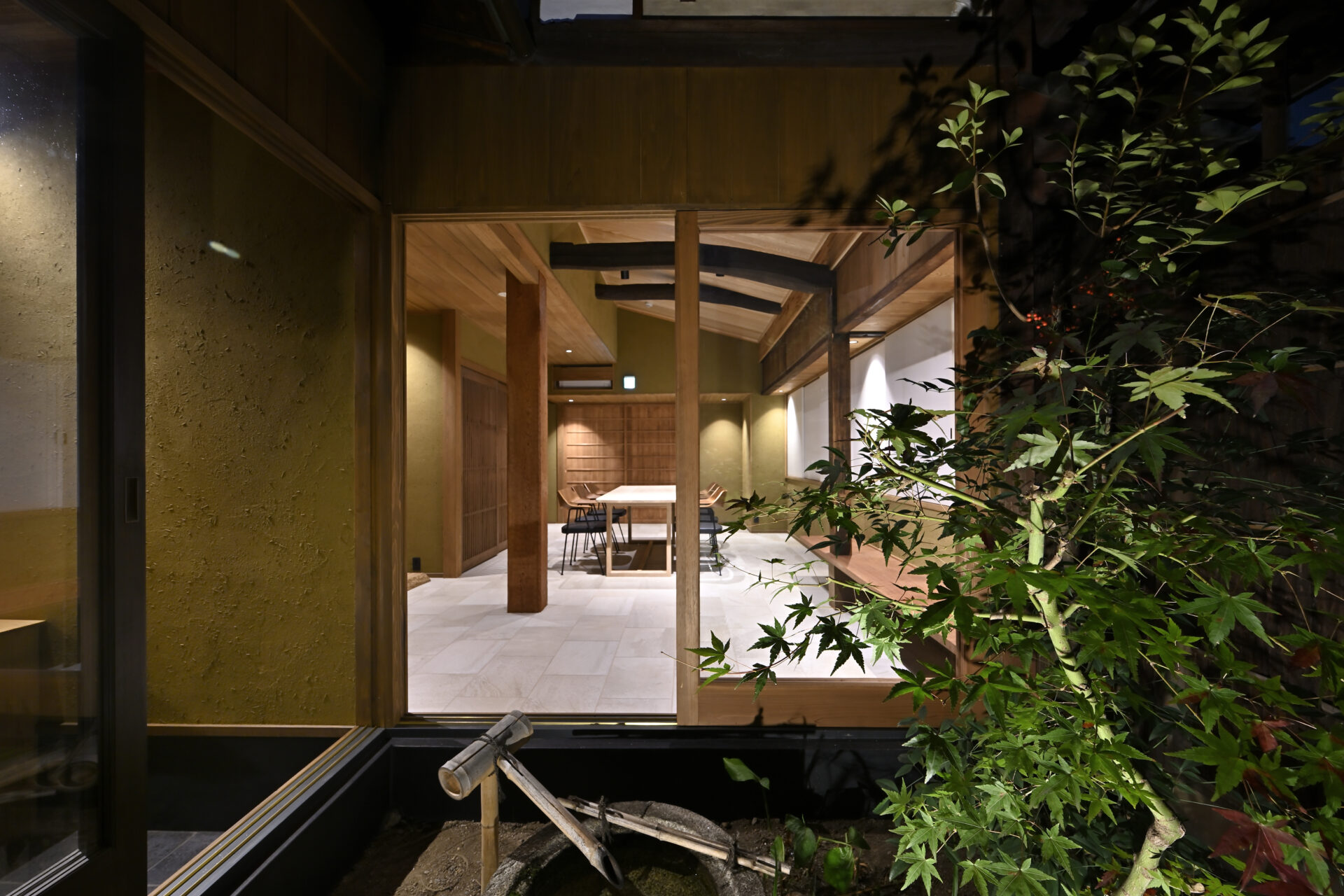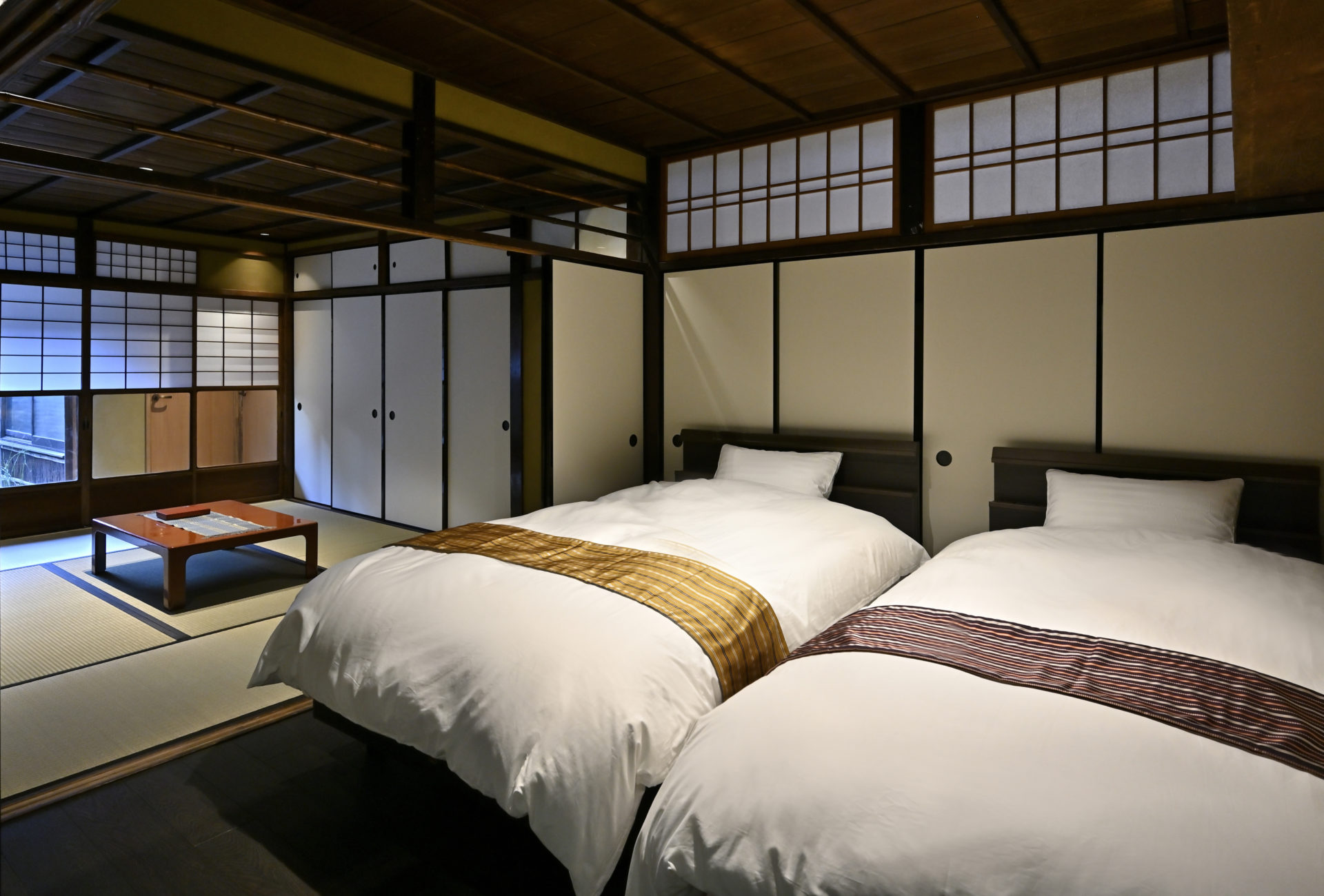The Fujita Residence is a traditional town house, or machiya. It was built at the transition of the Edo era (1603-1868) into the early Meiji era (1868-1912). The building was later renovated and extended during the Taisho era (1912-1926) and early Showa era (1926-1989). This traditional style house has been designated a registered tangible cultural property of Japan for its cultural importance.
The Fujita Residence is located in the town of Yamana-cho, derived from Yamana Sozen, a warlord in the Muromachi era (1336-1568) who resided in the town. The district is also known as "Nishijin" (West Camp), because Yamana Sozen was the head of the Western Army during the Onin War (1467-1477). Textiles long produced in the district also came to be called Nishijin-ori textiles, and are still globally renowned today.
The Fujita Residence has been preserved as a valuable cultural property that provides a window into the lifestyles of bygone days.

